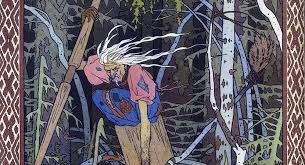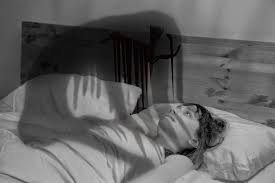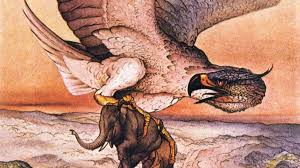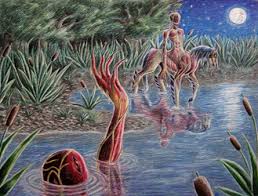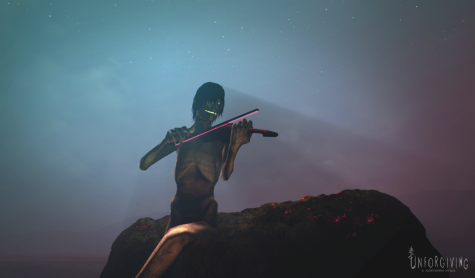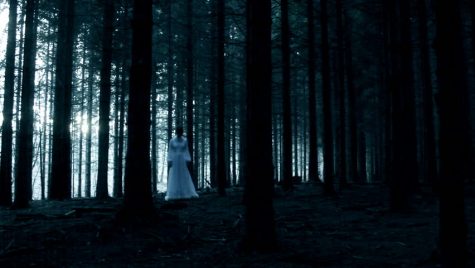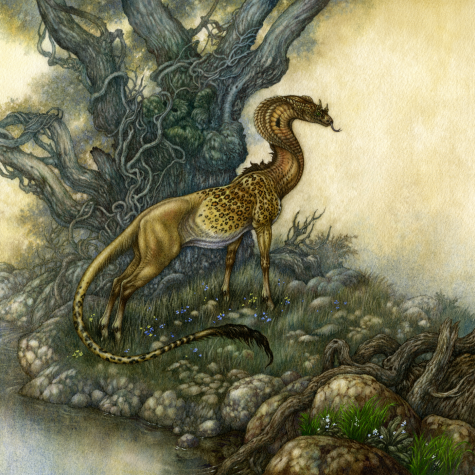Mythical Monsters: the Striga
Denn die Todten reiten Schnell. (For the dead travel fast.) –Bram Stoker, “Dracula”
Many modern vampire myths can be traced back to the striga, an umbrella term used to describe a host of Slavic monsters whose souls have been ensnared by black magic. The term itself derives from the Latin word strix, which, literally translated, means ‘owl,’ but is commonly used to describe winged omens of death. Striga are most prevalent in Romanian mythology, where the term has been linked to the Romanian verb a striga, ‘to scream.’
Several characteristics are universal amongst the different breeds of striga: they drink blood as their sole means of sustenance, able to survive on that of large animals but preferring humans’ as it keeps them satiated for longer. All striga were once humans themselves, warped by black magic or the desire for revenge after death; as such, many still exhibit traits of humanity, including the ability to communicate, the retention of their human memories, and—far more rarely—empathy for mankind, their usual prey.
Of the striga themselves, there are three principle varieties. The most common is the strigoaică, a human woman who has sold her soul to the Devil; the resulting black magic twists her body into a monstrous new form, elongating her face into a wolf-like muzzle, sharpening her teeth into knife-like fangs, and hunching her body so that she must lope around on all fours. She eschews civilization, lurking in the woods to prey upon lost travelers, which she lures from their paths by imitating a crying child. By night, however, she sneaks in through the windows of nurseries to suck the blood of infants, prompting many parents to leave a decoy cradle in the room; a doll hewn from hawthorn with a single silver nail driven into its head will kill the striga who devours it.
Next is the strigoi viu. These are sorcerers who have grown too powerful for the mortal plane, thereby warping their corporeal body. Unlike the strigoaică, the strigoi viu is able to appear human for short intervals, making them exceptionally crafty predators when the need arises. However, they appear to retain more of their humanity than their witch-cousins, and rarely hunt human prey; instead, they prefer the livestock of subsistence farmers—creating, of course, a bigger economic problem. It is possible to pacify them with an offering of wheat and milk, but the presence of a strigoi viu dries farmland and withers crops, so it is not necessarily wise to do so.
By far, the most dangerous striga is the strigoi mort, the Dead Striga. This undead creature was the inspiration for Bram Stoker’s Dracula, possessing both the superhuman strength and speed that the count and his modern successors are known for. The strigoi mort rises from the graves of the fresh dead, returning to their families to act as though they had never died. The strigoi mort feeds off of their life force, however, causing them to weaken and die in its place. Sometimes, the corpse of a person unjustly dead—murdered, starved, or driven to suicide—would become a strigoi mort to exact revenge upon those it held responsible for its passing, after which it would take up residence in abandoned buildings or crumbling ruins, holding onto its last scrap of tortured humanity. It was thus necessary to take precautions before burial to ensure that the corpse did not reanimate; decapitation, a silver stake driven through the heart, or a clove of garlic under the tongue were all believed to be effective wards.
No monster is more popular or universally recognizable than the vampire, but few are aware of its true roots. Although Slavic folklore goes wildly underappreciated as a whole, its impact on supernatural pop culture has been profound, forever changing the scope of horror literature and cinema alike. Should you wish to become better acquainted with the striga and its fellow creepy-crawlies, start with the Witcher series by Polish author Andrzej Sapkowski; if a hands-on adventure is more your style check out the best-selling video game adaptation, which has won over 800 awards. Just remember that not everything is as it seems—and some monsters are of our own making…





